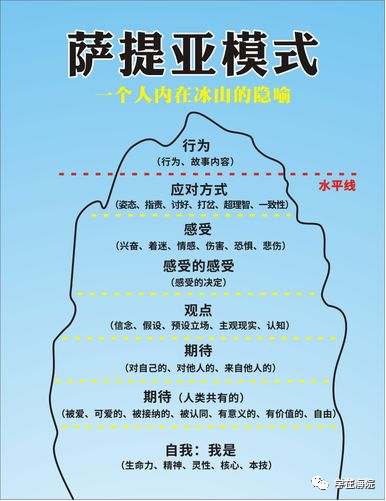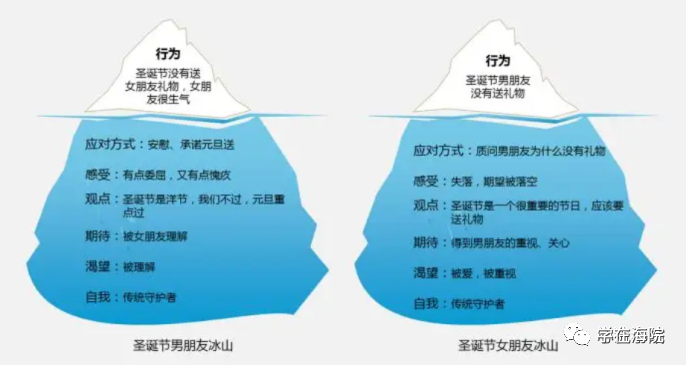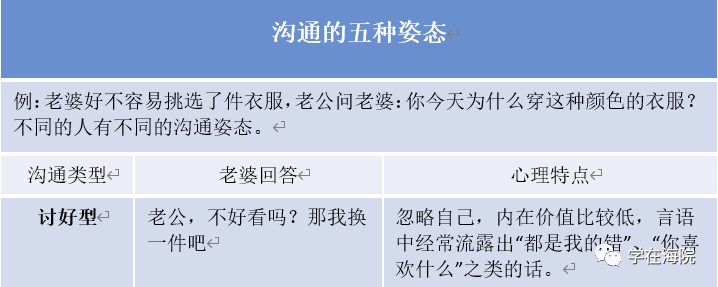Author: Sun Meihua
French philosopher Jean-Paul Sartre said, “Hell is other people.” Many of our pains, entanglements, depressions, and sorrows stem from our communication and interactions with others. “Because of what they said to me, I was hurt; because of what they did to me, I am in pain,” and so on. So, can we avoid interpersonal communication to escape this pain?
Unfortunately, human sociability places each of us within a certain social circle, inevitably requiring us to interact and communicate with various people. “No man is an island”; we all have a need for interaction. Therefore, the only way to avoid the aforementioned pains is to learn better interpersonal communication skills and handle interpersonal conflicts more harmoniously. Today, we will introduce an effective communication method called consistent communication between the inner and outer self.
Before discussing the specific method of consistent communication, let us first understand the famous psychotherapist Virginia Satir and her five communication stances.

Virginia Satir (1916-1988) was a world-renowned psychotherapist and family therapist, a pioneer in family therapy who has held a leadership position since the 1950s. She was hailed as “the master of family therapy for everyone” by the Journal of Human Behavior and created the Satir Model.
Among her theories, the Iceberg Theory is a metaphor indicating that a person’s “self” is like an iceberg, where we can only see a small part of the surface—behavior—while the larger part of the inner world is hidden beneath the surface, unseen, just like an iceberg.

Let us experience Satir’s Iceberg Theory through an example:

According to the Satir Model, people exhibit various communication stances: the pleasing type, the blaming type, the overly rational type, the distracting type, and the consistent expression type.


(1) Pleasing Type—No self, low inner self-worth
They neglect themselves, are particularly sensitive to others’ feelings, and care deeply about others’ opinions, fearing that they might do something others dislike. The more they value others, the more they worry, leading to cautious behavior; a small mistake can cause prolonged regret. They elevate others while devaluing themselves. They lack opinions, basing their actions on others’ evaluations, fearing rejection, and only feel safe by lowering their self-worth. They hesitate to make requests and find it hard to refuse others.
In conversation, they often say things like, “It’s all my fault,” or “I just want to make you happy.” This type of communication may seem harmonious but lacks vitality, causing the other party to be indifferent, which deepens their sense of low self-worth, creating a vicious cycle where the distance between the two grows. It’s like two scales; as one rises, the other falls, increasing the distance between them.
(2) Blaming Type—Habitually attacks and criticizes others, shirking responsibility
Blaming types are accustomed to attacking and criticizing, preferring to shift responsibility to others. They are often destructive to their environment, choosing isolation and failure over maintaining authority. When problems arise, they first look for external reasons, blaming and nitpicking others, saying things like, “It’s all your fault,” or “What are you doing?” They never look for reasons within themselves and tend to fixate on minor issues, becoming easily angered; they see everything as someone else’s fault.
Such individuals often create a “combat” atmosphere filled with blame and complaints, where problems remain unresolved, yet they are filled with anger. This is a highly destructive communication pattern. Interestingly, blaming types often partner with pleasing types, while pleasing types tend to choose blaming types.
(3) Overly Rational Type—Extremely objective and rational, only concerned with facts, ignoring emotions
Overly rational types are “cold-hearted” and extremely objective. They focus on data, logic, and facts, caring only about whether the facts comply with regulations, while ignoring and avoiding their own and others’ emotional experiences. They love to reason, speak rationally, tend toward perfectionism, and are good at criticism and risk assessment. They appear strong and calm but are internally weak and lonely. They are sensitive inside, feeling a sense of emptiness and alienation. Although their words may have some truth, they often leave others feeling uncomfortable and disconnected.
(4) Distracting Type—Habitually interrupts and diverts
The main characteristic of the distracting type is their habit of interrupting and interfering. When they hear others speak, they do not answer questions directly or respond off-topic. They are fixated on their own thoughts, appearing to communicate while actually only expressing what they want to say. These individuals often have poor focus and low efficiency in work and study; when faced with core issues, they tend to evade rather than thoroughly resolve them. This type of communication is often ineffective, leading the other party to not want to continue the conversation, while they remain unaware of why.
(5) Consistent Expression Type—Harmonious interaction between self, others, and the situation
Consistency is the goal advocated by Satir. This model is based on a high sense of self-worth, achieving balance, acceptance, connection, reflection, and flow among self, others, and the situation.

Consistency embodies a blend of self-love, respect for others, and awareness of the current situation.
Consistency is a balanced state, impartial and just right, a balance in motion, a dynamic equilibrium.
Consistency presents a harmonious state: harmony with others, inner and outer harmony, and harmony with the environment, representing a harmonious life, harmonious living, and a harmonious society.
Consistency is not a uniformity of sameness but a flow and connection among the three parties. Any obstruction to one side will present a pressure pattern; for example, a person overly focused on themselves often disregards others and the situation, leading to a blaming behavior pattern.
Consistency represents a capacity for awareness and mindfulness. It involves recognizing one’s own iceberg and that of others while managing oneself, taking full responsibility for one’s actions, feelings, sensations, viewpoints, expectations, and desires.
Consistency signifies maturity, experience, and cultivation, embodying an attitude of harmony, tolerance, and acceptance, representing a state where you are well, I am well, and everyone is well!
Which of these communication styles do you often use?
We recommend you learn the fifth type—consistent communication between the inner and outer self, as it is the key to harmonious interpersonal relationships!
Let us first become aware of our own iceberg, then practice consistent communication!
After mastering the awareness of our iceberg, do not forget to practice perceiving others’ icebergs, as consistent communication is a fusion of self-love, respect for others, and awareness of the current situation.
I hope this content helps you, and I look forward to seeing you in a more harmonious coexistence with yourself, others, and the world.

